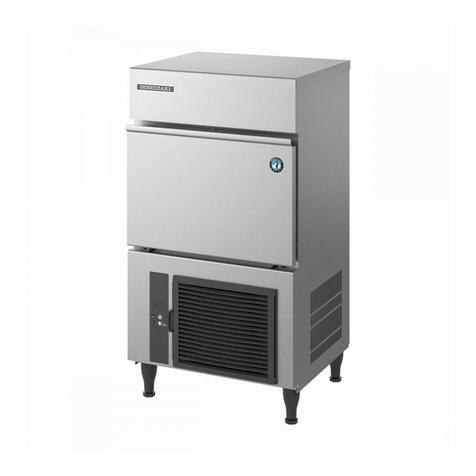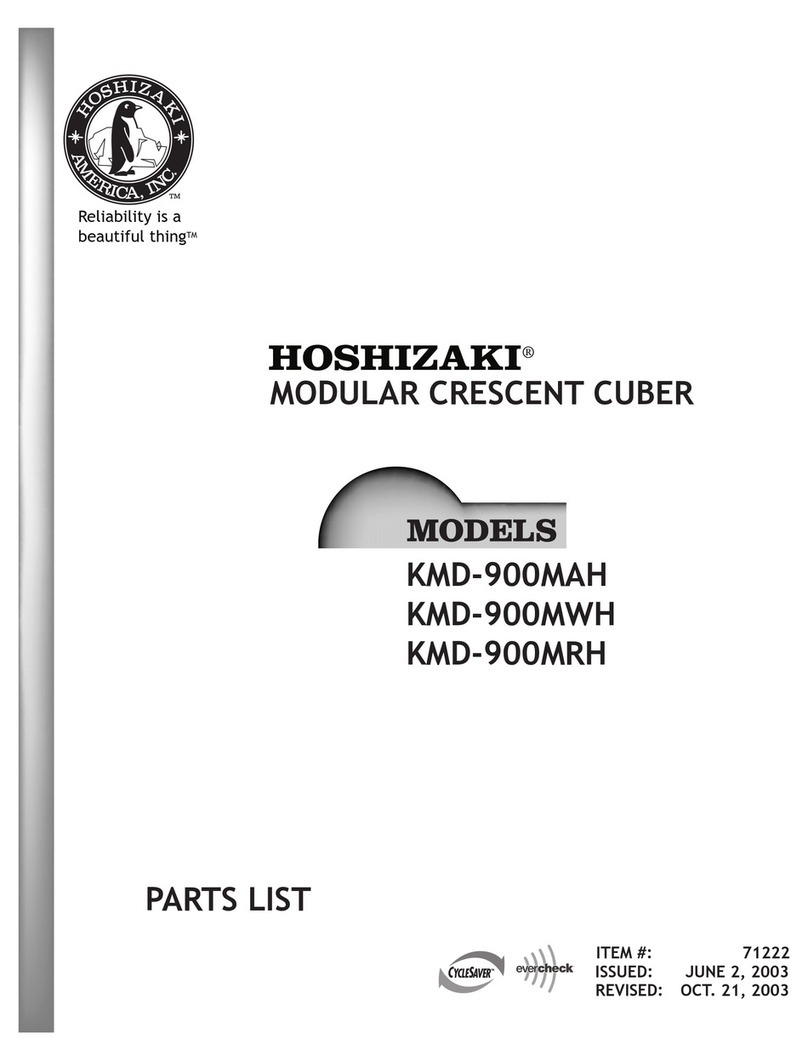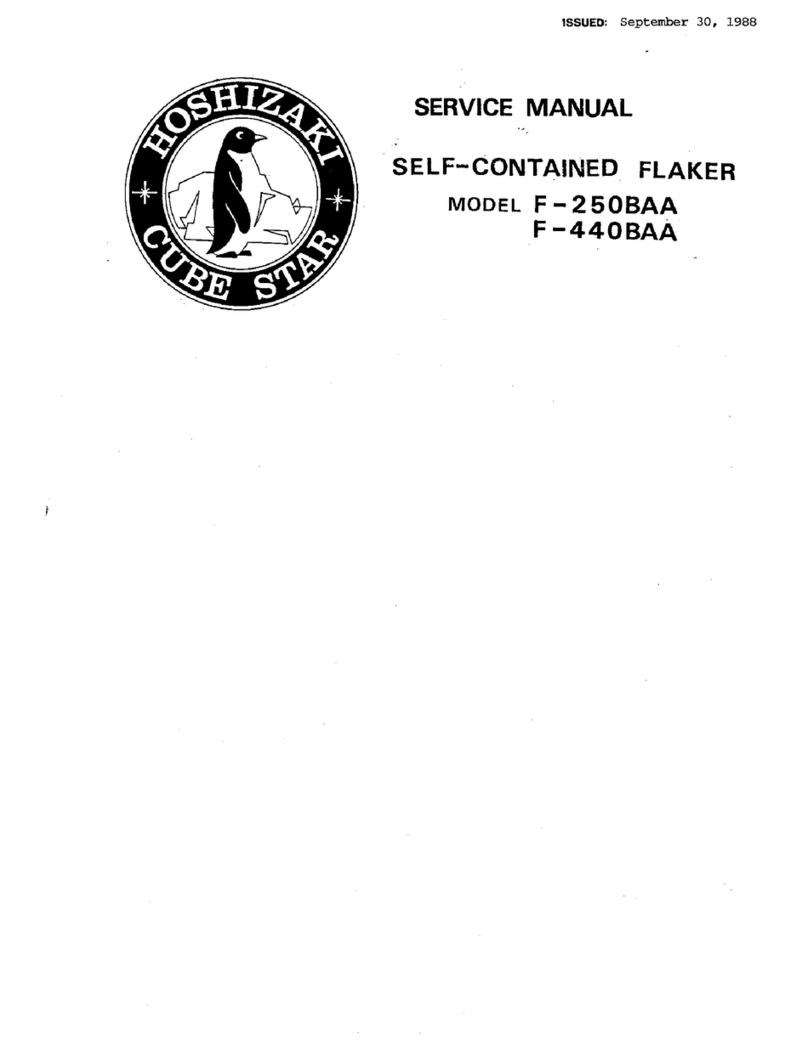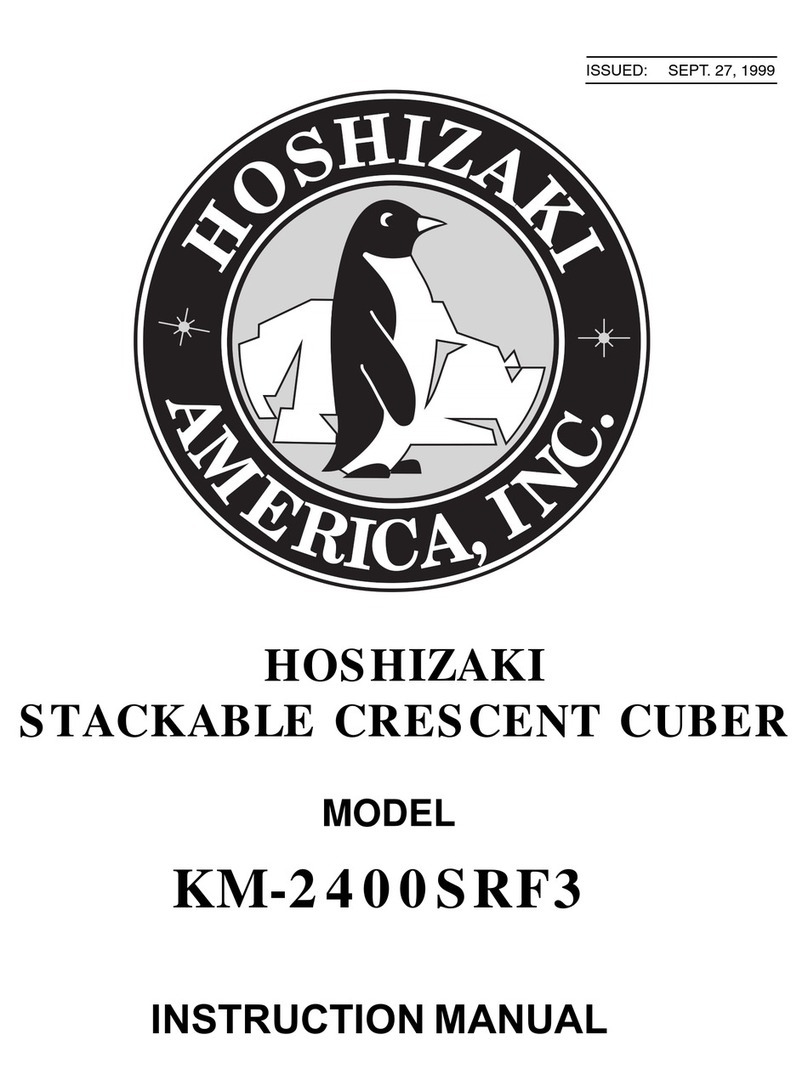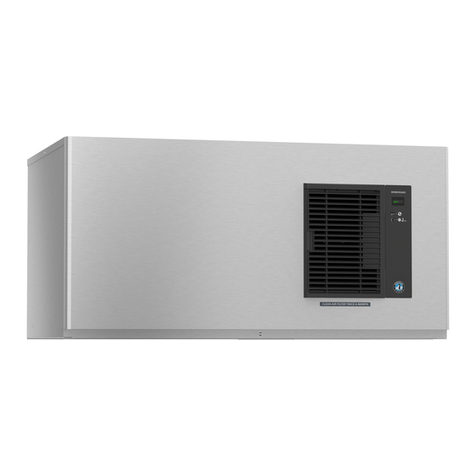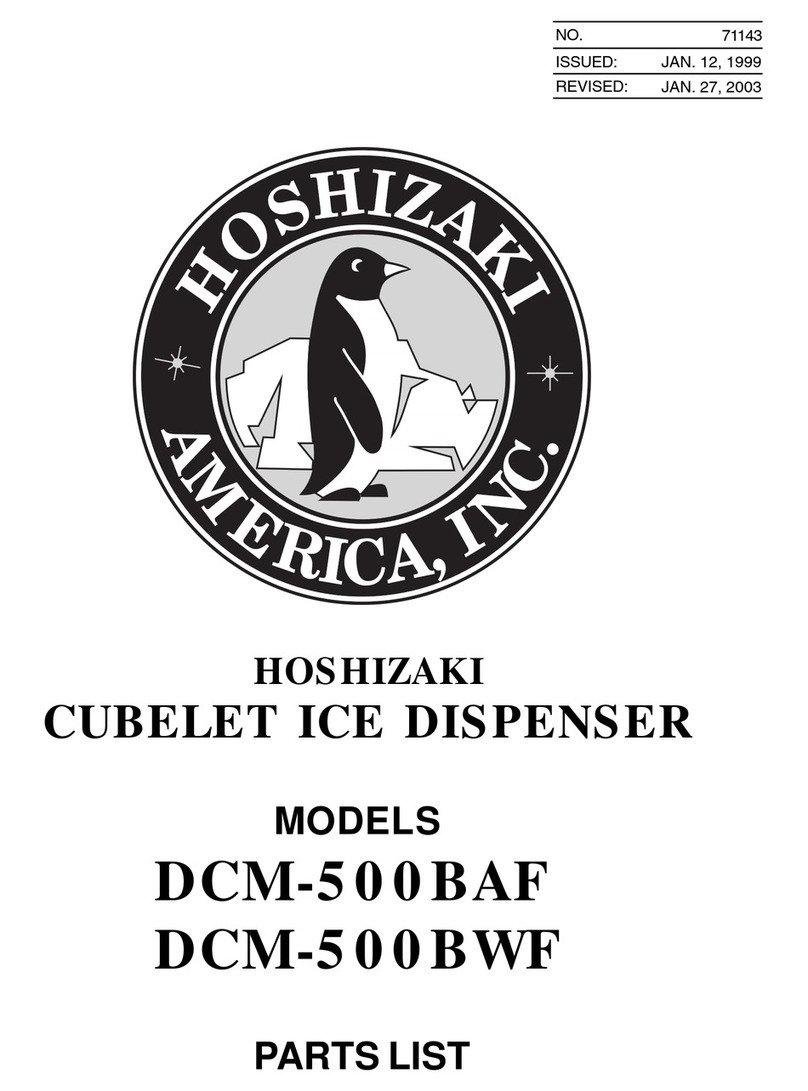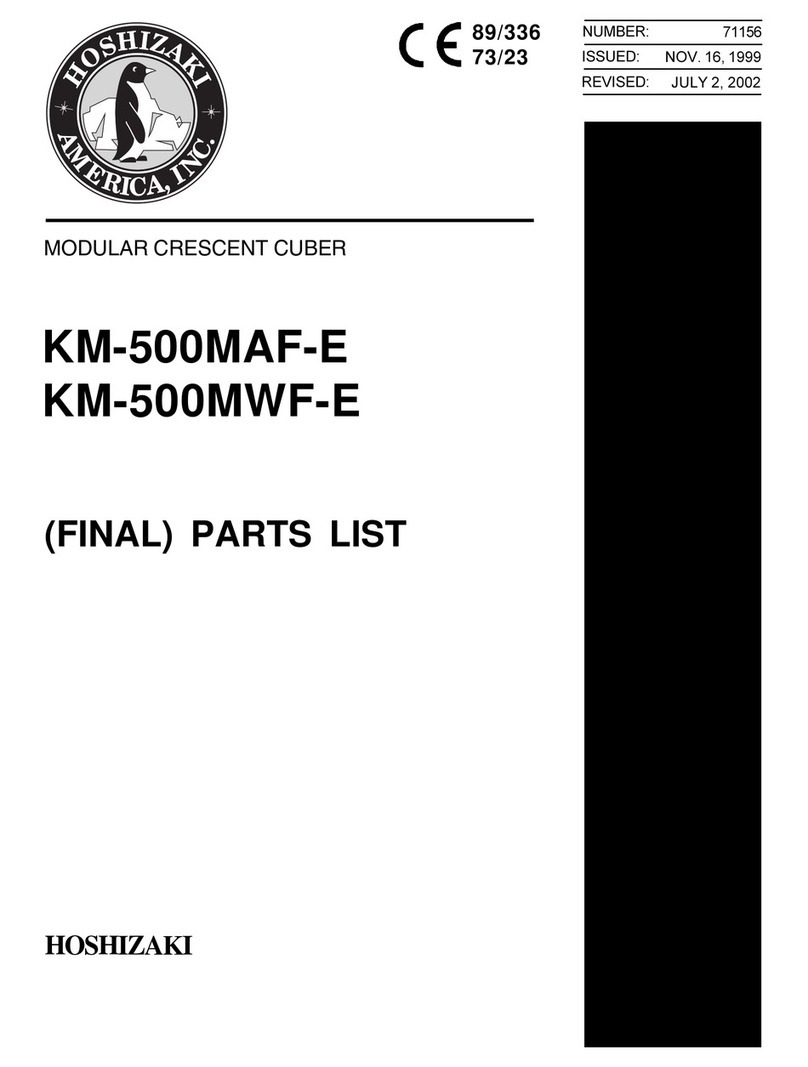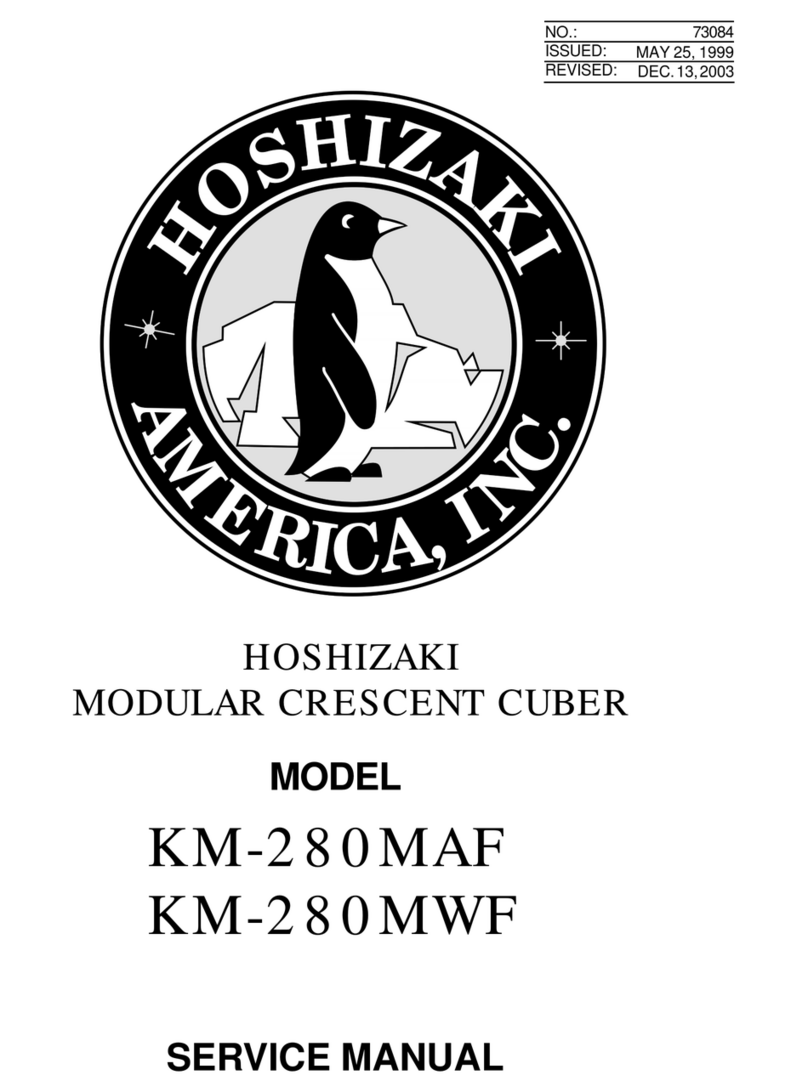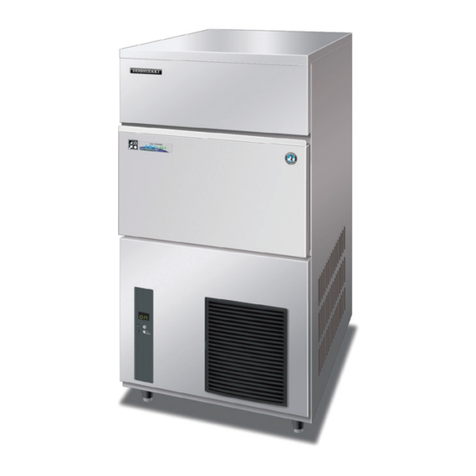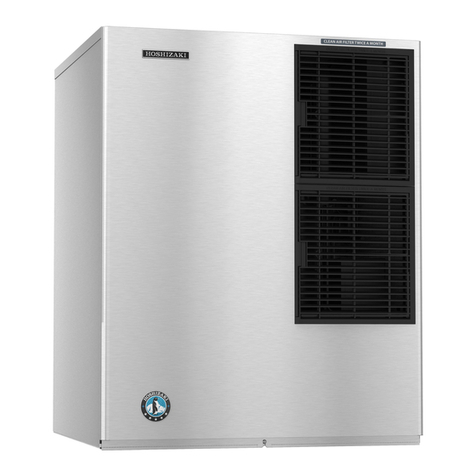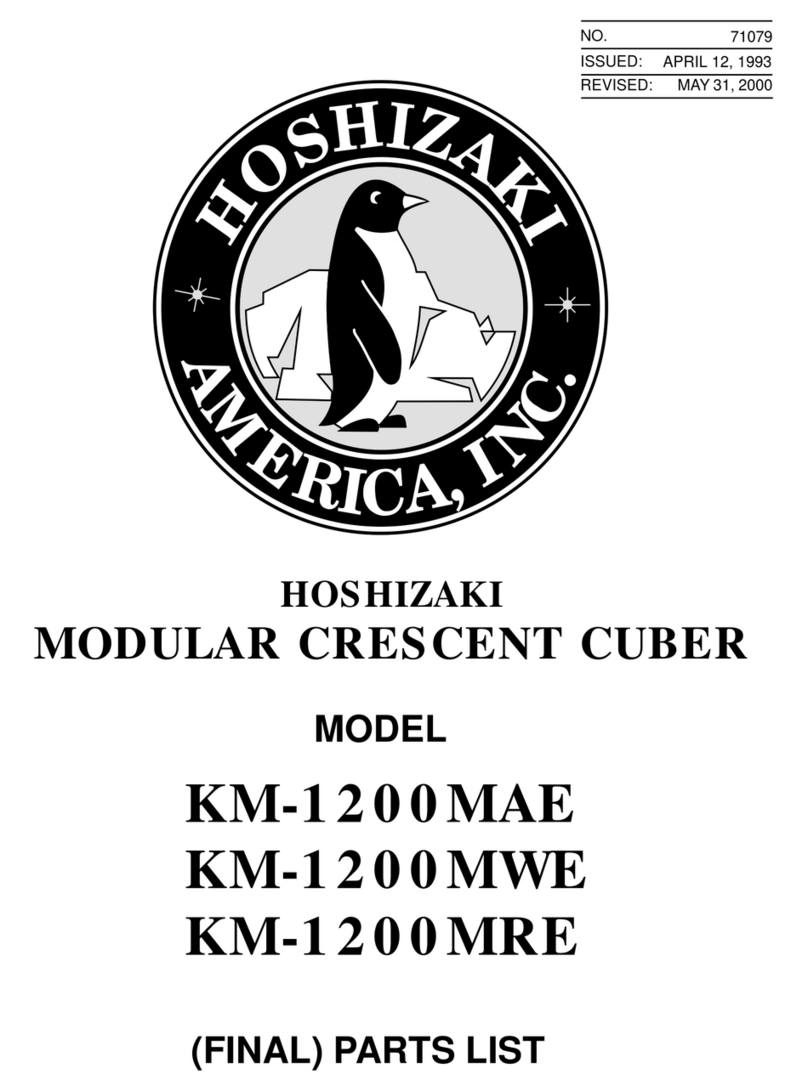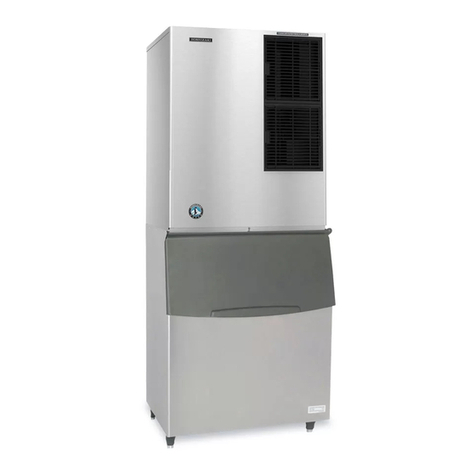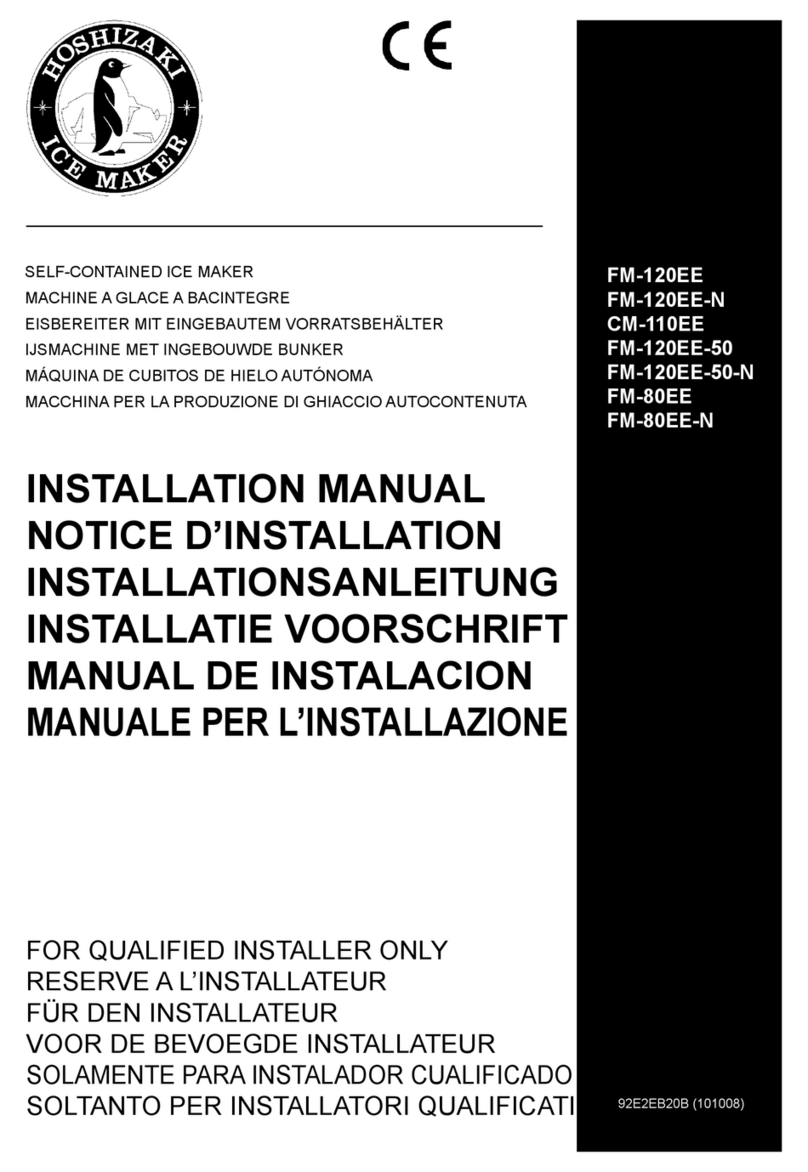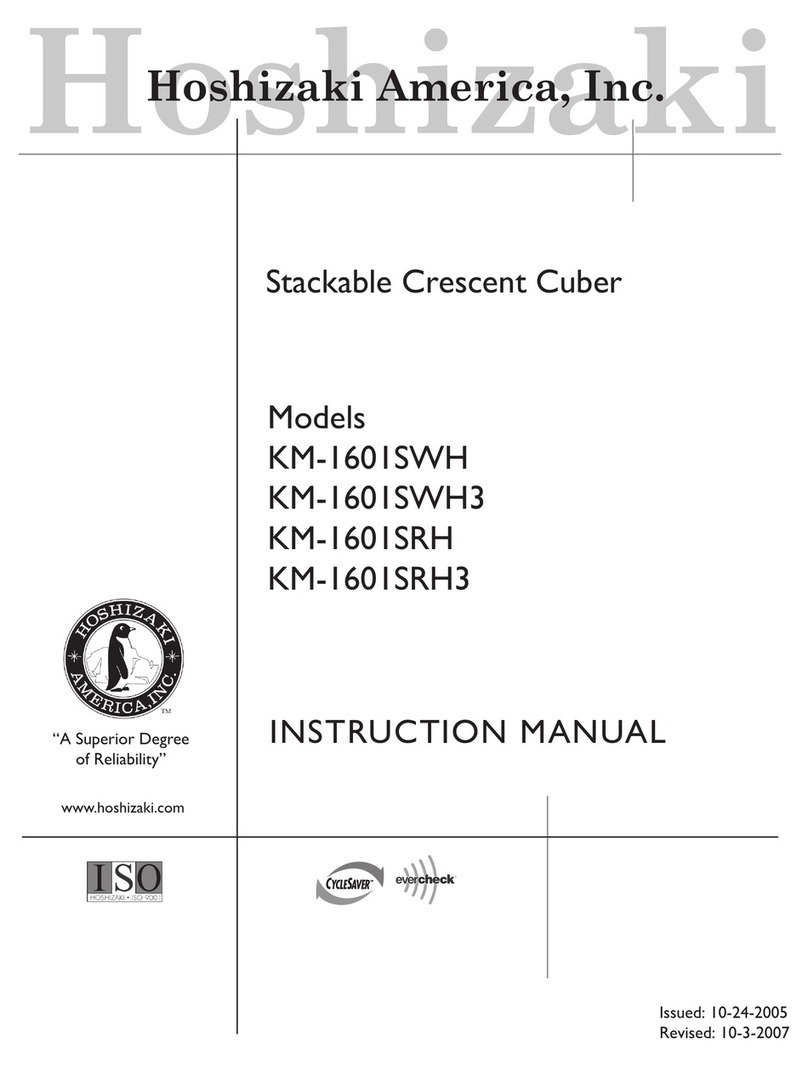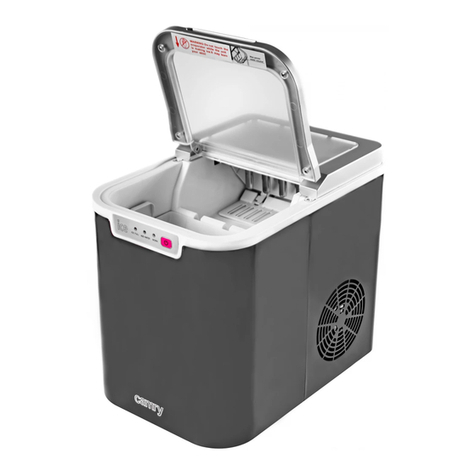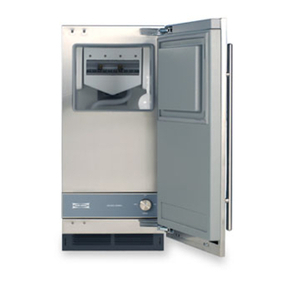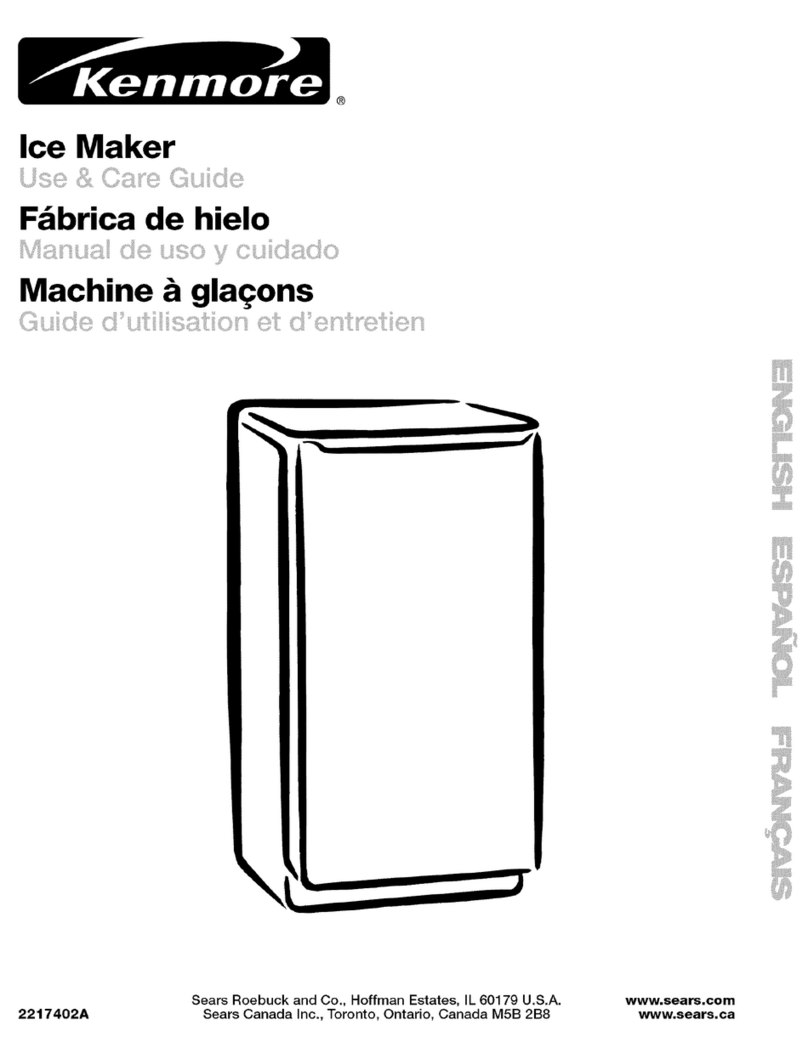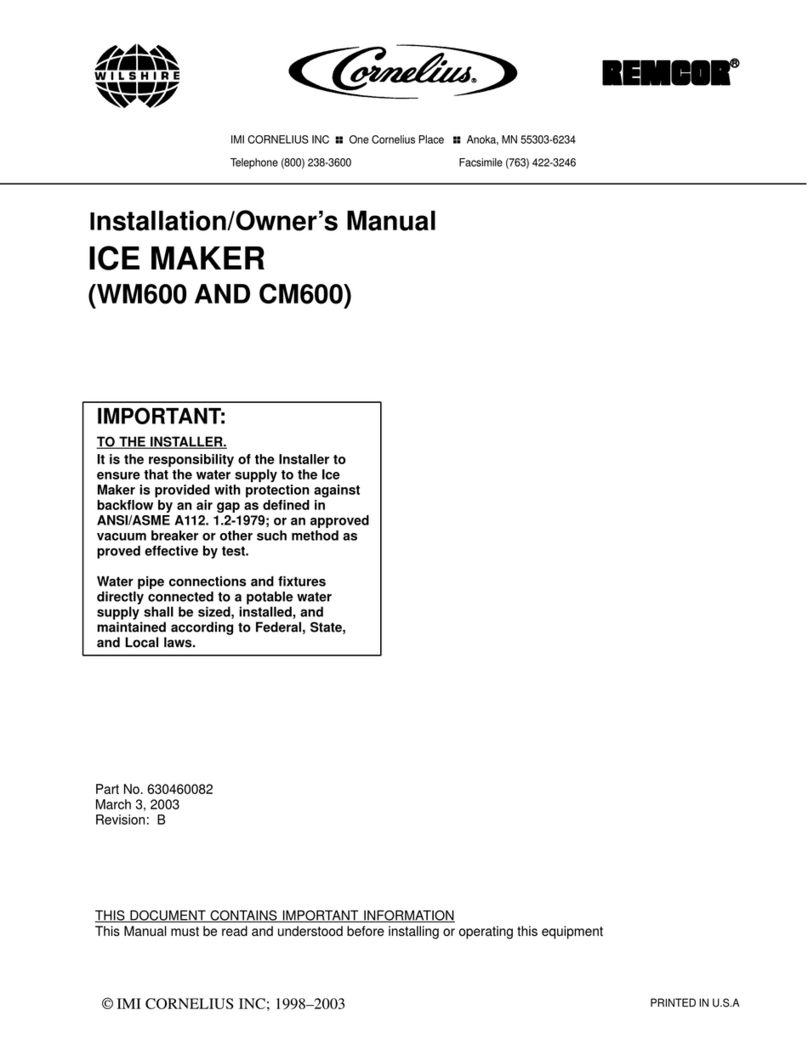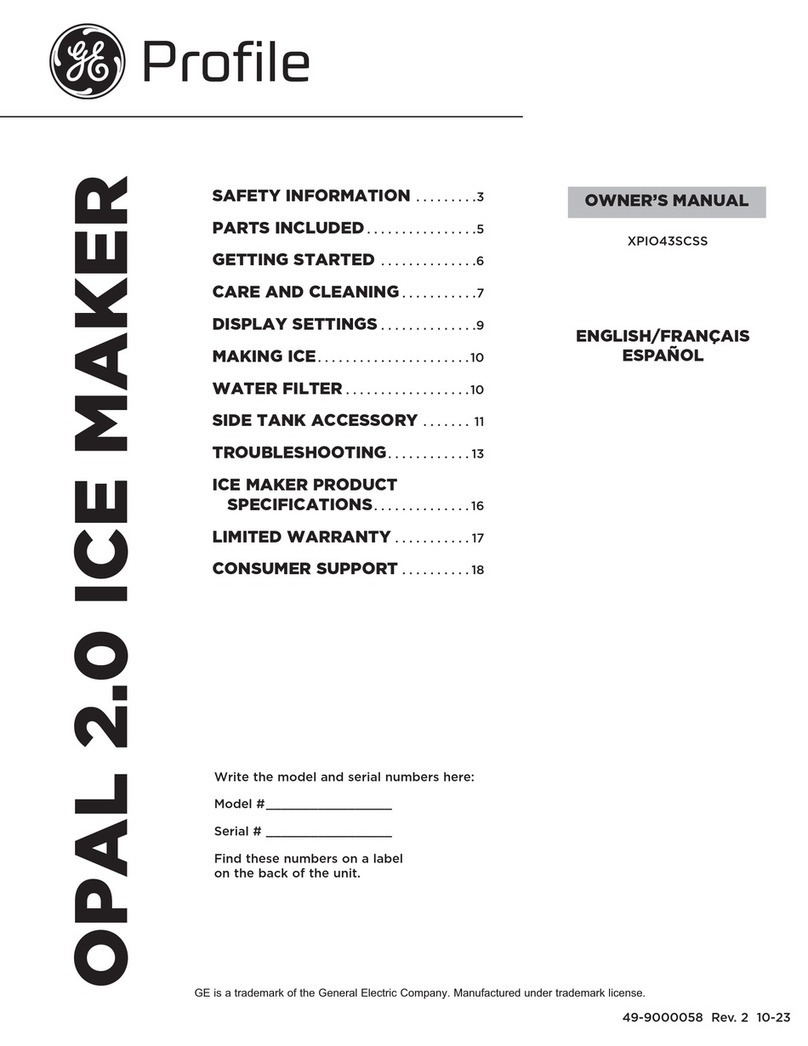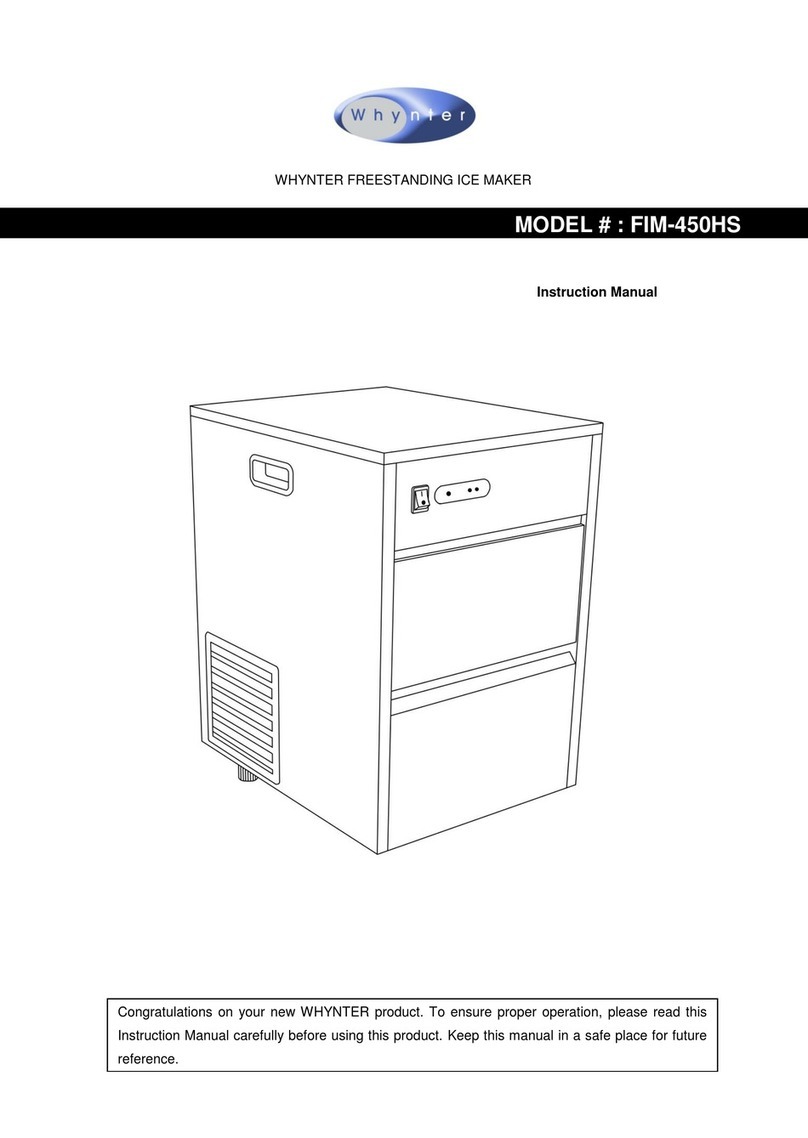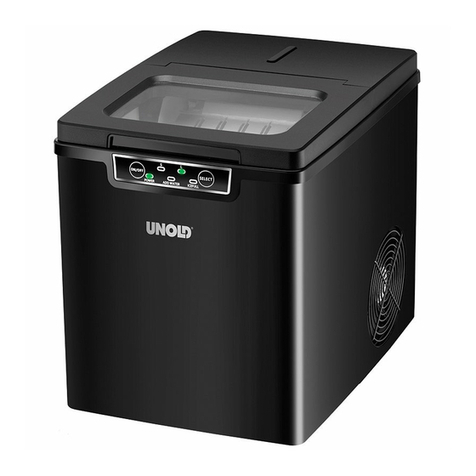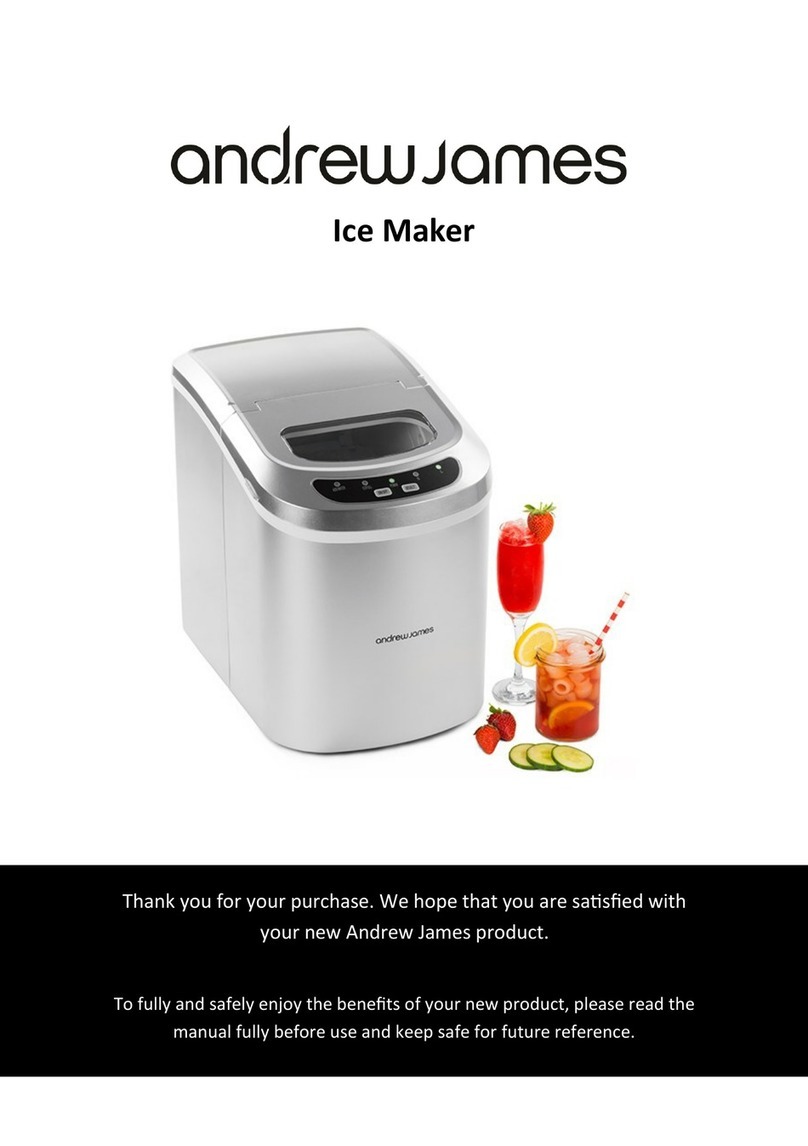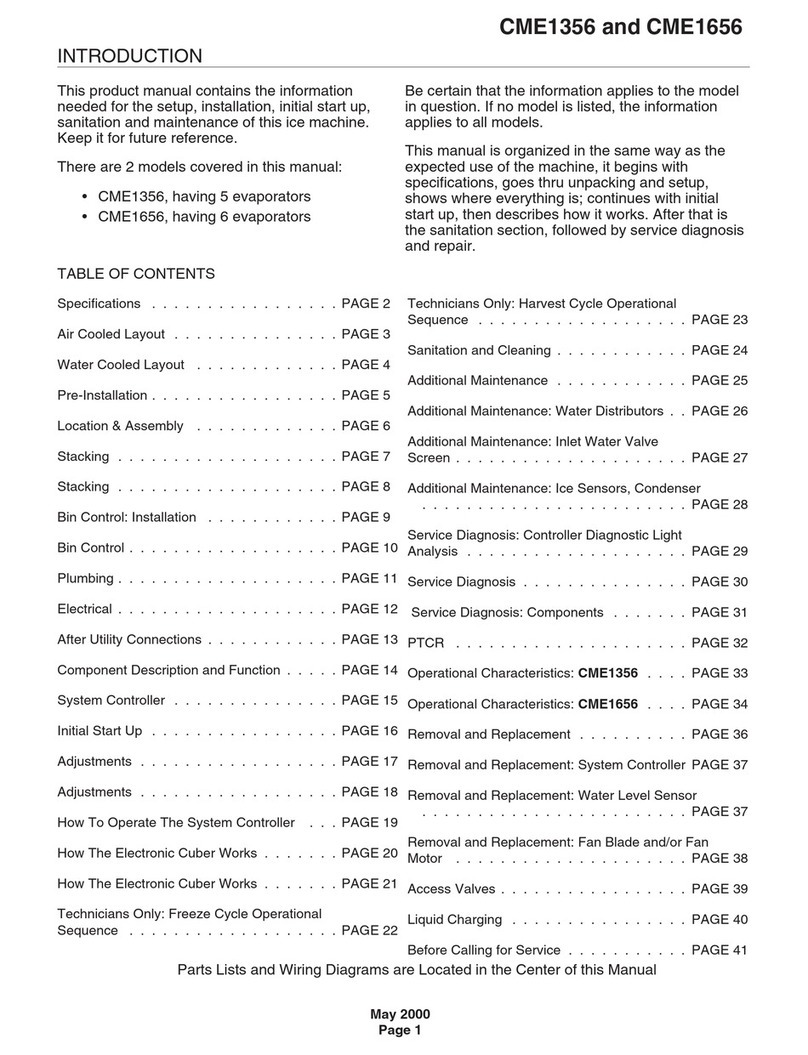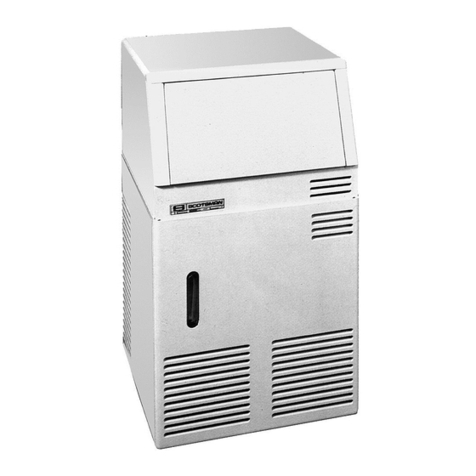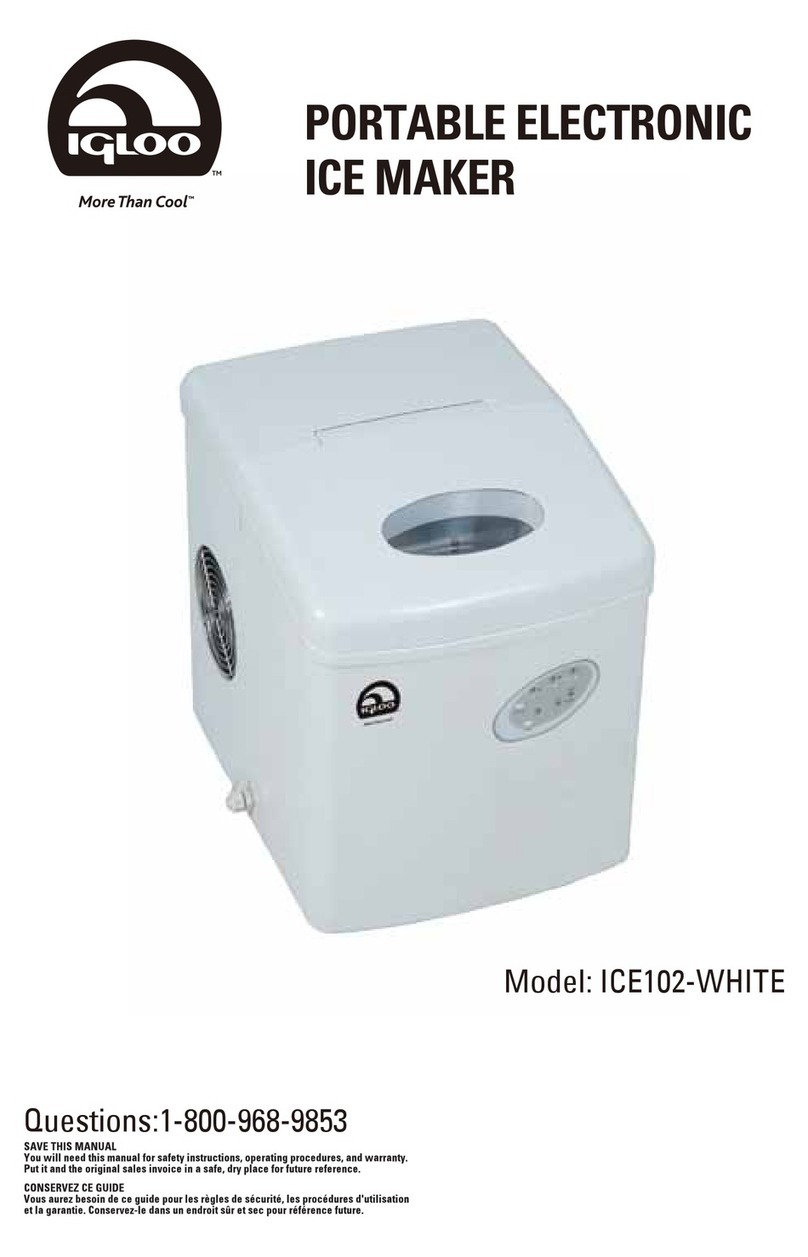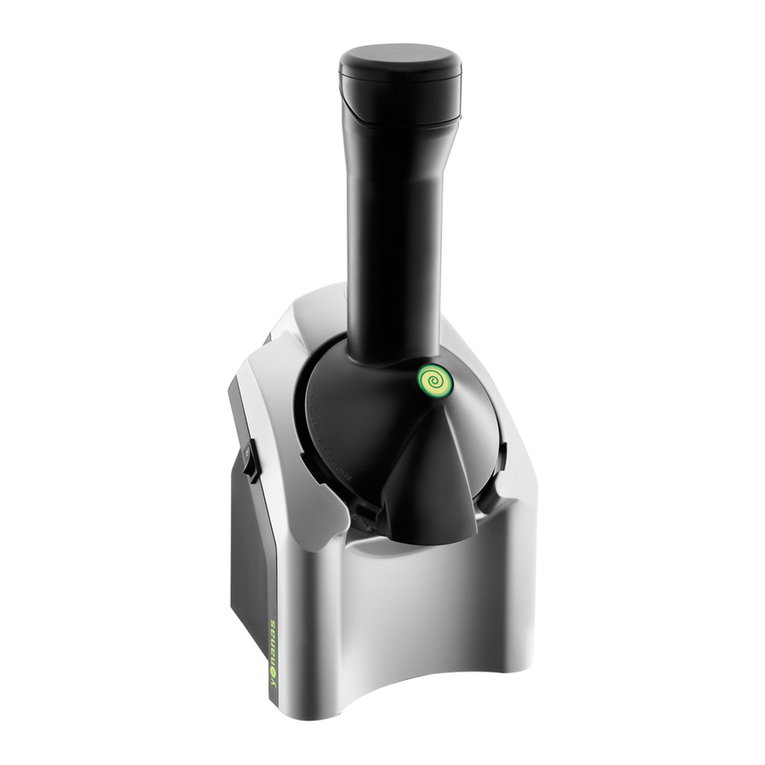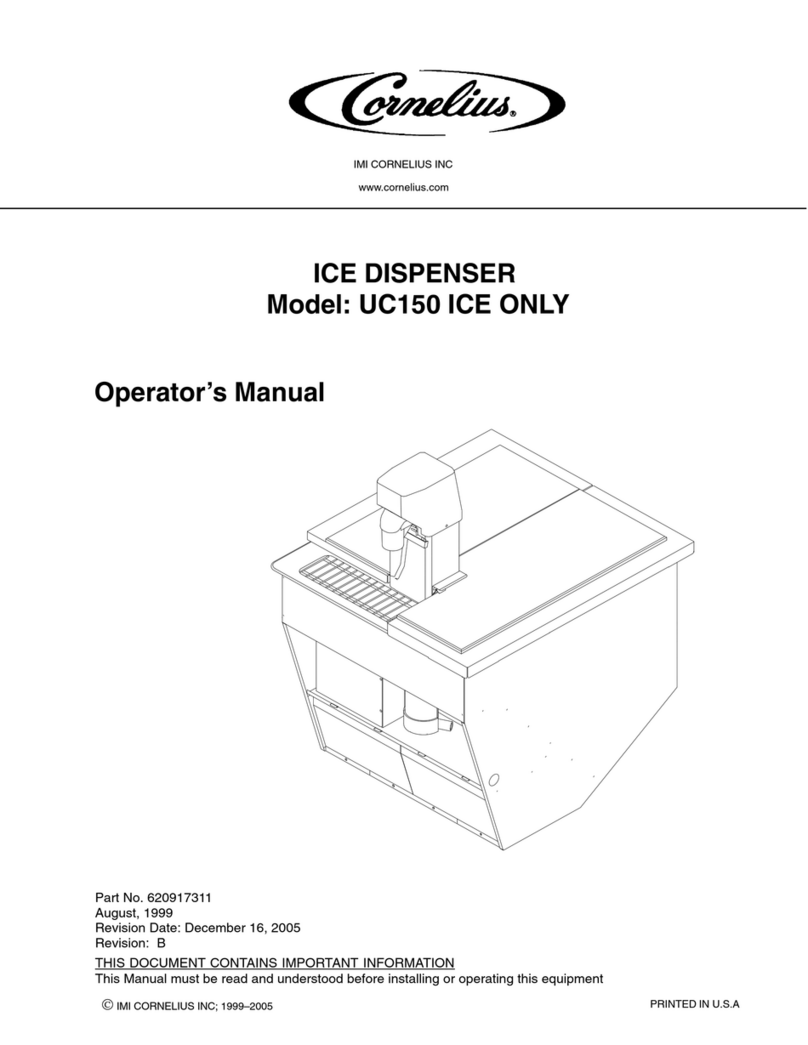3
I. INSTALLATION INSTRUCTIONS
1. UNPACKING
WARNING
Children should not be allowed in reach of the packaging elements
(plastic bags and expanded polystyrene) as they are potential
sources of danger.
CAUTION
Remove shipping carton, tape(s) and packing. If packing material
is left in the icemaker, it will not work properly.
6. Do not place anything on top of the icemaker or in front of the
louver.
7. This icemaker will not work at subfreezing temperatures. To
prevent damage to the water supply line, drain the icemaker
when air temperature is below zero (see “II. 2. PREPARING
THE ICEMAKER FOR LONG STORAGE”).
3. INSTALLATION
* Incorrect installation can cause harm to people, animals or things, for
which the manufacturer cannot be held responsible.
* Place the icemaker in the selected permanent site.
* The appliance must be positioned so that the plug is accessible.
4. ELECTRICAL CONNECTIONS
WARNING
THIS APPLIANCE MUST BE EARTHED
To prevent possible severe electrical shock to individuals or
extensive damage to the unit, the icemaker must be connected
via the exible supply cord supplied with the icemaker to an
appropriate outlet socket installed in accordance with local codes
and regulations i.e. AS / NZS 3000.
Disconnect the main power supply before any maintenance,
repairs, or cleaning is undertaken.
* It is recommended that these appliances are connected to a separate
240VAC supply, protected by an appropriate circuit breaker and
Residual Current Device. Check the nameplate on the icemaker for
the supply requirements.
* The main control box fuse is rated at 5A and should only be replaced
by a qualied service engineer.
* The service of a licensed electrician may be required to ensure the
installation is in accordance with the local codes and regulations.
* The wires in the mains lead are coloured in accordance with the
following code:
Green & Yellow = Earth
Blue = Neutral
Brown = Live
5. WATER SUPPLY AND DRAIN CONNECTIONS
WARNING
Connect to potable water supply only.
* The service of a licensed plumber may be required to ensure the
installation is in accordance with the local codes and regulations.
[Connection to the water supply]
* The connections to the mains water supply must be made in
accordance with the Plumbing Code of Australia and in accordance
with AS / NZS 3500.1 and AS / NZS 3500.2. The dual check valve
(backow prevention) supplied with this unit must be connected
between the main supply outlet and water inlet of icemaker.
* Icemaking water must be potable water. Where scaling can be
caused by water quality, installation of an external lter or softener
is recommended. Contact your local water treatment professional or
Hoshizaki service agent.
* Water supply pressure should be minimum 0.07 MPa (0.7 bar) and
maximum 0.8 MPa (8 bar). If the pressure exceeds 0.8 MPa (8 bar),
use a pressure reducing valve. Do NOT throttle back the supply tap.
* The dual check valve must be connected in the icemaker water supply
between the main water supply outlet and the straight connection of
the inlet hose as shown.
1) After removing the packaging, make sure that the icemaker is in good
condition. If in doubt, please do not use the equipment but apply to
professionally qualied personnel.
2) Remove shipping tape holding the door and separator.
3) Remove the protective plastic lm from the exterior. If the icemaker
is exposed to the sun or to heat, remove the lm after the icemaker
cools.
4) Remove the package of accessories, and check the contents:
a) Outlet Hose 1
b) Scoop 1
c) Adjust Bolt 4
d) Dual Check Valve 1
2. LOCATION
IMPORTANT
1. This icemaker is not intended for outdoor use. Normal operating
ambient temperature should be within 7°C to 40°C. Normal
operating water temperature should be within 7°C to 35°C.
Operation of the icemaker, for extended periods, outside
of these normal temperature ranges may affect production
capacity.
2. The icemaker should not be located next to ovens, grills or
other high heat producing equipment.
3. The location should provide a rm and level foundation for the
equipment.
4. Allow 15 cm clearance at rear and sides for proper air circulation
and ease of maintenance and/or service should they be
required.
5. This appliance is not suitable for installation in an area where
a water jet could be used and where dripping is not allowed.
